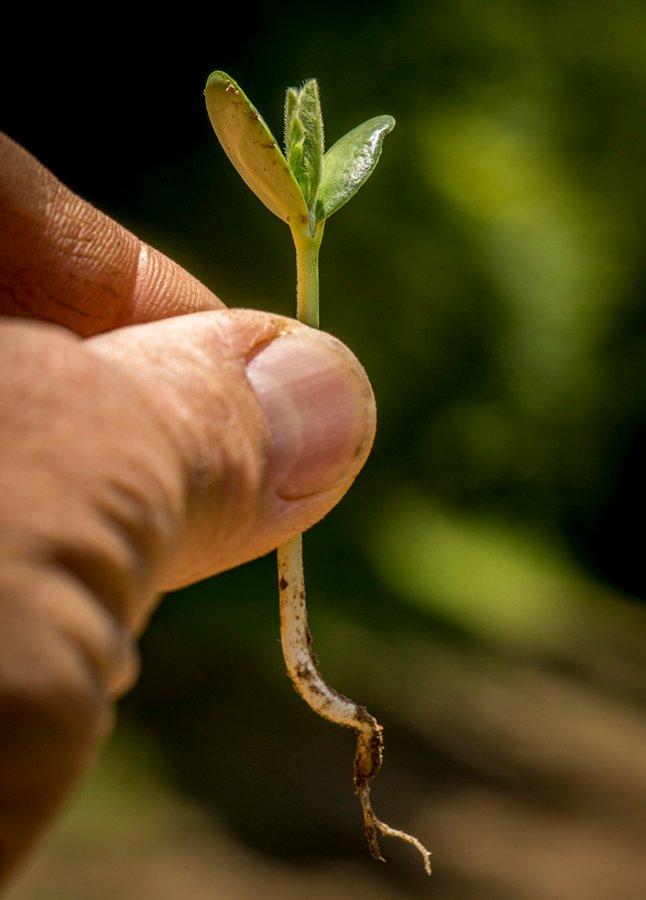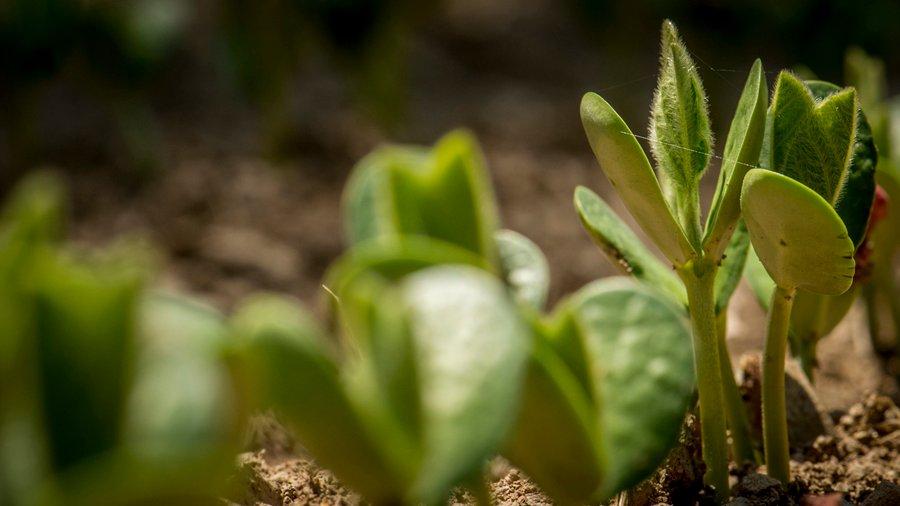How to Choose the Best Food Plot Seed for Your Land
With food plot season well underway, there are still some decisions to be made ... and mistakes to be learned from. But the goal remains: improving your hunting property.
You might find more questions than absolute truths. The first head-scratcher probably involves what to plant, a major consideration of which is the choice of annuals or perennials.
Annual plants, such as corn and soybeans, complete their life cycle in one growing season and then die. Perennials, such as white clover and chicory, live for more than two years. Both have advantages and drawbacks when used in food plots.
So which should you choose? Both. Probably. Depending on the circumstances. Here's what the experts say.
The main nutritional benefits of annuals are to produce rapid bulk food for short periods of time, particularly during a high-stress period of summer, when bucks are growing antlers, fawns are growing, and does are recovering and tending to fawns, said Jeremy Flinn, co-founder of The Buck Advisors, and regional wildlife biologist with Cabela's Wildlife & Land Management. But most hunters really plant annuals for their attractiveness during fall and winter for increased hunting opportunities. Perennials are like the tortoise in The Tortoise and the Hare. They grow slowly and steadily, but they provide high-quality nutrition year-round and can be excellent to hunt over.
Don't Miss: 5 Food Plots for Procrastinators
Flinn typically favors a 60-to-40 ratio of annuals to perennials, given ideal scenarios. Matt Harper, a deer nutrition expert from Iowa, agreed that annuals and perennials each benefit whitetails but said it's difficult to endorse a specific amount of one over the other without knowing the details about the property or the deer herd.
It's not like one does one thing and one does another. In the end, they both provide a food source for deer."
"Independently, I always treat perennials as kind of the backbone of a food plot program because they're always there. They're a constant food source. It's kind of the entree, so to speak — the meat and potatoes part of the food plot program," he said. "Annuals … are the garnish. You want a side salad or soup? That's their role. They can be a lot more variable. You can pinpoint a certain time of year, maybe a winter food source or maybe a summer food source, or maybe both. And also you can also target certain nutrients, too. So if you're really trying to get protein in the middle of summer, you're going to plant a certain thing. Or carbohydrates in winter, if you're planting corn or brassicas or something like that. They're variable pieces to kind of help fine-tune your food plot program.
Sounds simple, right? Hold on. Each option comes with caveats.

Don't Miss: The 10 Commandments of Food Plots
Perennials, on the other hand, can be more difficult to establish and maintain, especially when it comes to mowing and weed control, which are critical for plot success. Properly caring for perennials becomes tougher if you live far from your hunting property or don't have the necessary equipment.
You do have that issue with maintenance, Harper said. I have one situation with a 70-acre piece I own 10 miles away that I can hardly get to. I rent it out to a guy who will run cattle on it during summer, so I don't really have any choice over there but to plant annuals.
That hits the crux of the matter, the experts said: The situation should dictate your mix of perennials and annuals.
There are lots of variables that play into it, so it's tough to say, 'This is the rule of thumb,' Harper offered. Have some flexibility. Really try to pinpoint what you're trying to accomplish. Just because you're not doing what the book says, whether 60-40 or something else, doesn't make it wrong. Your situation might be different.
If you have a large deer population, and you're trying to keep them on your property but don't have a lot of crops around you … all of a sudden perennials probably become the predominant food source that you want to plant. In that case, it can be 60 to 70 percent of food plots in perennials. But on my farm where I live, there are lots of food sources around — corn and hay, all over. Honestly, when I really need to have a lot of food is in the winter, so on my place, I probably plant maybe 20 percent perennials and 80 percent annuals. I want enough perennials that deer keep using the property, but I know they're also wandering off to hit this hay field or that hay field. But I know that come winter, they really need food, so I need to make sure I don't lack that.
There's also the question of plot size. Do you plant clover or other perennials in larger plots, and corn, beans, or other annuals in smaller hunting-specific plots? Again, it depends on your property and your circumstances.
As a rule, perennial plots tend to be bigger, but not always, Harper stated. In my mind, they're the feeding plot. They're right in the middle of your property and are pretty big. Deer just kind of congregate there, as it's your actual food supply plot. Annuals are often a food supply plot, but you're hunting them. They tend to be smaller. But there are other variables. If you need a whole lot of winter food, you're going to have to plan on planting a pretty good-sized winter food plot. … What gets eaten off isn't growing back. It's a finite amount of food.
And obviously, you can hunt over (a perennial field), too. It's not like you can't hunt over a clover field or alfalfa field.
Bottom line? Try to include perennials and annuals for an all-around food plot program, but base your decision on the situation and your goals for a property. And don't be afraid to consult with professionals. Their guidance might save you time, effort, and money ... and make you a better land manager in the process.
Don't Miss: 10 Reasons Why Your Food Plots Are Failing
Editor's Note: This was originally published June 18, 2015.
Are you a hunter wanting to learn how to accomplish your goals? Check out our stories, videos and hard-hitting how-to's on food plots and land management.








